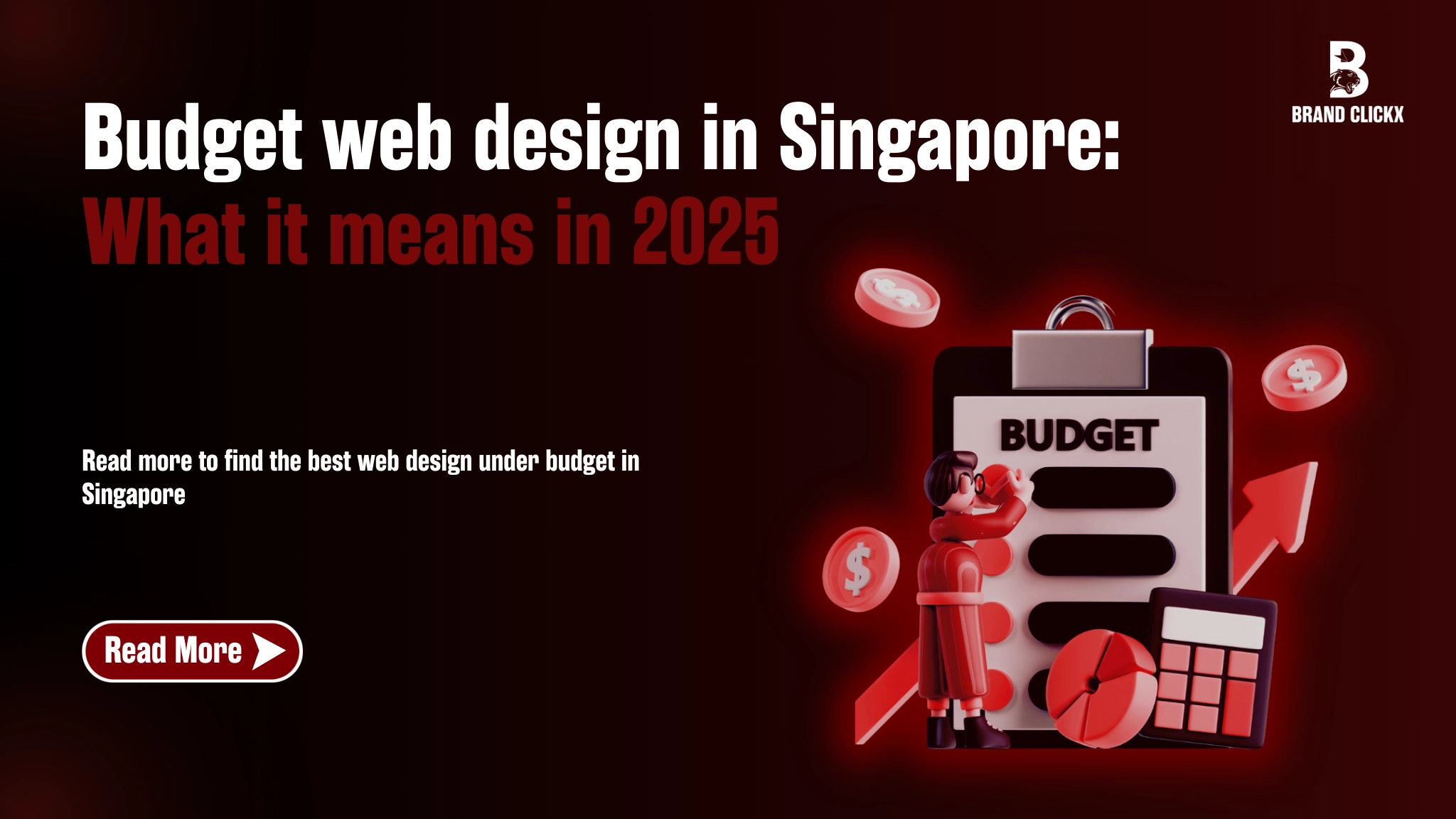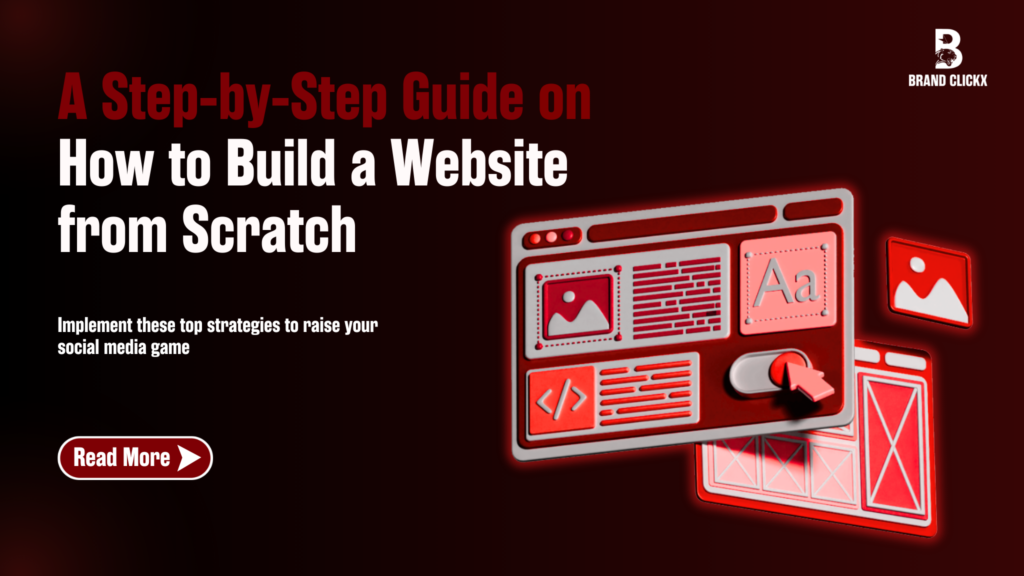If you’re trying to get a site up and running on a low budget, the whole procedure can feel chaotic. Particularly in a place such as Singapore, where the digital competition is brutal and everybody has a smooth, up-to-date site. The reality is you don’t have to spend a fortune to create something that’s functional, professional-looking, and easy for your customers to use. Affordable web design in Singapore has changed. It’s no longer a compromise. It’s a strategy.
A few years back, “budget web design in Singapore” was something of a red flag. It suggested something second best, cobbled together with little effort. But the perception of that has changed.
With the rise of no-code platforms, accessible design tools, and a growing pool of skilled freelancers and micro-agencies, small business owners and startups now have more control than ever. If you’re smart about your choices, you can get a great-looking website for under SGD 2,000 without sacrificing quality.
Now, I’m not saying every cheap option is a good one. Some cut corners that end up costing more in the long run. But if you understand what you truly need, stay clear about your goals, and work with people who know what they’re doing, building a quality website on a budget in Singapore is entirely possible.

What Does “Budget” Actually Mean Anymore?

Let’s talk about the budget. it doesn’t necessarily mean cheap or basic. Instead, it means efficiency. It means prioritizing the elements that matter most to your visitors: speed, clarity, usability, and good content. Many startups I’ve spoken to built lean, conversion-focused websites for less than SGD 1,500, and they’re doing just fine.
You’re not paying for a design that wins awards. You’re paying for a site that helps you get business. And thanks to platforms like Webflow, Framer, and WordPress, you no longer need a team of five developers and six months to launch something decent. These tools come with built-in design frameworks, mobile optimization, and SEO settings that used to cost a premium.
Even local web design studios now build on these platforms to speed up delivery and lower costs. They’ve ditched the custom-coded-from-scratch approach unless the client specifically requests it. Why? Because clients care more about getting results than showing off complex backend systems.
Why It’s Easier Than Ever to Build a Site That Looks Expensive But Isn’t

There’s a shift happening, and it’s being driven by the people actually using the web, not just designers. In 2025, users want simple, fast, and clear. You don’t need parallax effects or massive animations. You need clean typography, consistent branding, a few high-quality images, and words that resonate.
A web developer I chatted with recently, Marcus from a boutique firm in Jalan Besar shared that most of his clients don’t ask for flashy effects anymore. What they want is a homepage that makes an impression, a contact form that works, and mobile responsiveness that doesn’t break. He builds most client sites using a pre-tested Webflow template customized for branding, and it works beautifully.
Templates aren’t lazy anymore, they’re strategic. Good ones are built with UX in mind, already optimized for speed and structure. The trick is customizing them enough so your business doesn’t look like every other one out there. That’s where the real skill comes in.
The Real Costs Behind Budget Web Design in Singapore

Prices have stabilized a bit in the past couple of years, and you can generally expect to spend between SGD 800 and SGD 2,000 for a well-designed, five-page site if you’re hiring a freelancer or a small studio. That usually includes the essentials: homepage, about page, services, contact page, and maybe a blog or portfolio.
If you need e-commerce functionality, the budget climbs a little. But even then, you can get started for less than SGD 3,000 using tools like Shopify or Ecwid. These platforms simplify things like payments, shipping, and inventory management. You don’t need to pay extra for custom-built e-commerce systems unless your business demands it.
Maintenance is another cost to factor in. Many local developers offer a support package for SGD 300 to SGD 500 a year, which usually includes security updates, backups, and a few small content tweaks. That’s money well spent. A broken site costs more in lost leads than a yearly support plan ever will.
Where to Find Designers Who Won’t Overcharge You
Singapore has no shortage of talented freelance web designers. The hard part is filtering out the ones who overpromise and underdeliver. If you want quality work on a reasonable budget, you’ll need to do a little homework.
Start by checking local design-focused platforms like Carousell Services, where freelancers and small studios advertise their work. Look for those with a solid portfolio and client reviews. Another great place is SG Freelancers, a Facebook group where you can post your needs and get responses from real people in the scene.
If you’re open to remote options, platforms like Fiverr and Upwork still have plenty of talent. Just make sure you work with someone who understands Singapore’s business culture, especially if your site targets local customers. Clarity, layout, and even spelling nuances matter more than you think.
One of the best-kept secrets? Students from local institutions like NUS, NAFA, and LASALLE are often looking for real-world projects to build their portfolios. They might lack years of experience, but they’re fresh, ambitious, and well-versed in modern design principles. If you can communicate your needs well, you’ll be surprised by the quality you get.
What Makes a Budget Site Work Well
At the end of the day, you want a site that serves your business, not one that just looks good in a screenshot. A budget site that works is one that’s been thoughtfully planned. That means clear copy, logical navigation, fast loading times, and a strong call-to-action on every page.
Some of the most effective websites I’ve seen recently are incredibly simple. A landing page for a yoga instructor in Bishan, for example, with a booking form, three testimonials, and two mobile-friendly sections bookings went up 40% in the first month. That site cost SGD 1,000 and was built in less than two weeks.
Another startup founder I spoke with said their minimalist three-page website brought in over SGD 20,000 in leads in the first quarter. No blog. No chatbot. Just clarity.
That’s the core of budget web design in Singapore: being intentional. If you know what matters to your visitors and strip away everything that doesn’t serve them, your budget will go further than you think.
Final Thoughts
So if you’re a startup founder, solopreneur, or small business owner in Singapore wondering if it’s possible to launch a quality website without overspending, the answer is yes. Absolutely. But you have to be clear about your goals, trust in simplicity, and remember that websites are living things. They evolve. You don’t need to launch perfectly.
And if you start with a solid, budget-friendly foundation, you’ll always have room to grow.
FAQs
1. What is budget web design Singapore and how is it different from premium services?
Budget web design Singapore focuses on creating affordable, functional websites tailored to small businesses, startups, and solopreneurs. Unlike premium services that may involve fully custom-coded websites and large development teams, budget web design uses efficient platforms like WordPress, Webflow, or Framer to keep costs down while still delivering a clean, professional look.
2. Is budget web design Singapore suitable for ecommerce businesses?
Absolutely. Budget web design Singapore can support e-commerce businesses through cost-effective platforms like Shopify or WooCommerce. While custom features might be limited, you can still get a secure, mobile-friendly, and conversion-optimized online store that works well for most small to medium-sized retailers.
3. How much does budget web design in Singapore typically cost in 2025?
As of 2025, budget web design in Singapore generally ranges from SGD 800 to SGD 2,000 for a basic website with 4–5 pages. If you need e-commerce functions or additional features like multilingual support, it may go up to around SGD 3,000. The price depends on the complexity,the platform used, and whether you hire a freelancer or agency.
4. Can I use templates for budget web design in Singapore without looking generic?
Yes, you can. Many professionals in budget web design in Singapore use high-quality templates as a foundation and then customize them to reflect your brand. When done right, your website won’t look like a copy-paste job, it’ll look smart and intentional while saving you both time and money.



